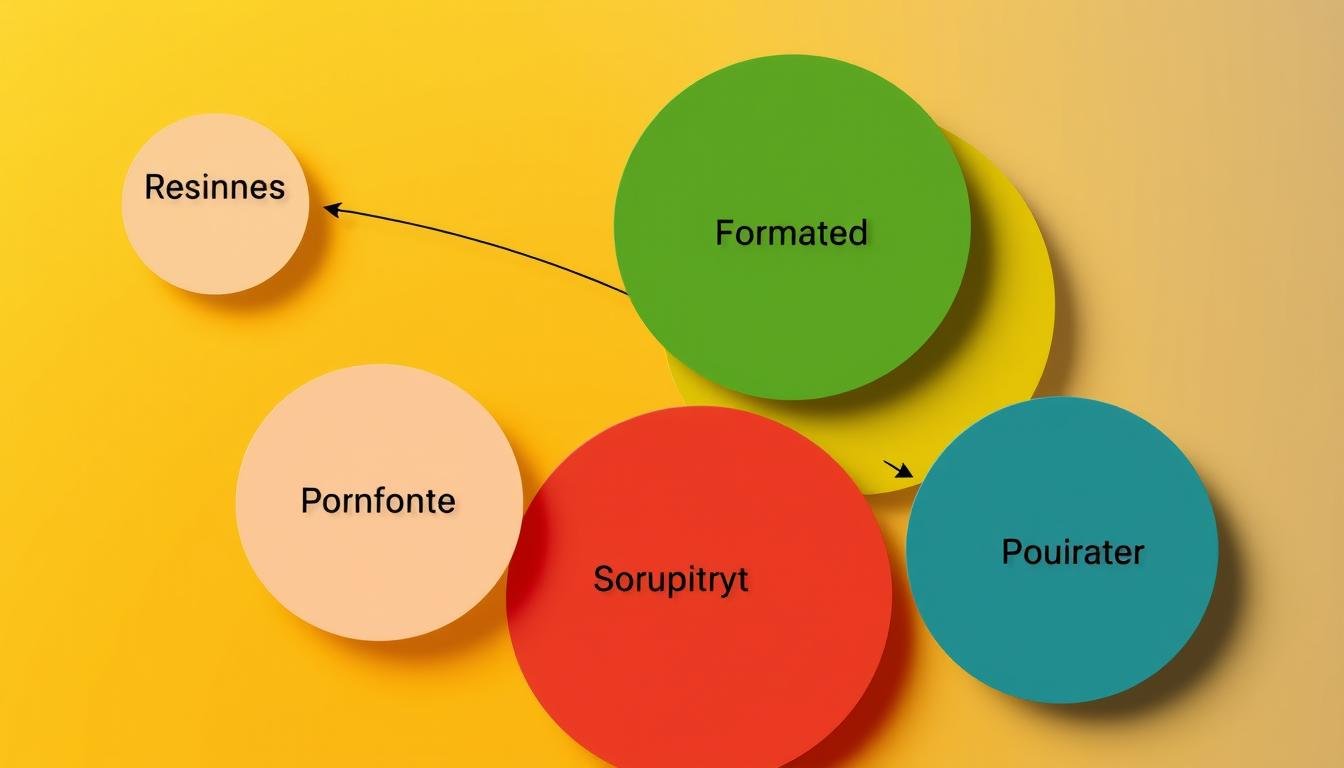Michael Porter: Competitive Strategy and the Five Forces That Shape Business
Imagine sitting in a bustling café in downtown Boston in 1979, flipping through the latest Harvard Business Review. You see an article by a young Harvard professor named Michael Porter. This moment is about to change how businesses see competitive advantage and strategy.
Michael Porter’s article introduced the Five Forces framework. This changed strategic management forever. These five forces include competition, new entrants, supplier power, buyer power, and substitute threats. They shape an industry’s long-term profits and dynamics.
Porter’s insights show how value in an industry is split among different groups. Companies use his Five Forces to understand and navigate industry interactions. Porter stressed that knowing just your competitors isn’t enough. You must look at all competitive forces to understand industry profitability.
Today, Porter’s Five Forces are key in strategic planning. They help companies deal with complex strategies. From government policies to mergers, businesses use this framework to make better strategies. Exploring these forces teaches us how to lead in the competitive world.
Introduction to Michael Porter’s Competitive Strategy
Understanding the market is key to a good business plan. Michael Porter’s strategy helps with this. His Five Forces model lets businesses see what makes their industry tough and attractive.
Overview of Competitive Strategy
Porter’s strategy helps businesses find a profitable spot in their markets. It looks at five forces that affect profits: new companies, supplier power, buyer power, substitutes, and competition. For example, Apple changed the music industry with the iPod, showing how new companies can shake things up.
These forces are vital for making strategic choices. Knowing them helps companies fight off competition or find new chances to grow. Volkswagen Group, for instance, manages its suppliers well, showing how important planning is.
Importance in Business Strategy
Using Porter’s Five Forces in strategy helps companies deal with tough markets. It shows where the chances and threats are, making decisions better. It works in many sectors, like cars, fashion, and drinks.
For example, Volkswagen’s suppliers don’t have much power, but shoppers have many choices, affecting Zara and H&M. This knowledge helps businesses make strategies that fit the market.
The model also highlights the threat of new products and strong competition. By looking at these, companies can make strong strategies for lasting success.
| Force | Example |
|---|---|
| Threat of New Entrants | Apple’s entry into the music distribution industry with the iPod |
| Bargaining Power of Suppliers | Limited power of Volkswagen Group’s suppliers |
| Bargaining Power of Buyers | Zara and H&M facing buyer power from abundant choices |
| Threat of Substitutes | Health drinks emerging as alternatives to traditional sodas |
| Competitive Rivalry | High intensity in fashion retail, automotive, and beverage industries |
The Origin of Porter’s Five Forces
In 1979, Michael Porter introduced the Five Forces framework. This model changed how companies plan and analyze their industries. It made businesses look closely at what affects competition and profits.
Historical Context
Before Porter’s work, there was no clear way to study industry dynamics. Porter saw the need for a structured method to analyze industries. This led to big changes in how companies set their strategies.
Industries like the automotive sector, with high entry barriers, or the airline and retail sectors, with intense competition, show how Porter’s ideas changed things.
Publication of the 1979 Harvard Business Review Article
Porter’s key article in the Harvard Business Review in 1979 changed strategic planning. It broke down competitive forces in industries. It talked about supplier power, new entrants, and substitute products.
It showed how companies in markets with high startup costs and strong players face big entry barriers. This shapes the competition.
Porter also looked at the paper and aluminum sectors. He showed how firms act when costs are high and demand is low. He pointed out how strong brands help keep new companies out in retail and beverage sectors.
| Industry | Impacted Dimension | Example Companies |
|---|---|---|
| Automotive | High Barriers to Entry | Ford, Toyota, GM |
| Airline | Intense Competition | American Airlines, Delta Air Lines, United Airlines |
| Retail | Customer Loyalties | Walmart, Amazon |
| Beverage | Threat of Substitution | Coca-Cola, Pepsi |
Understanding the Five Forces Model
In 1979, Harvard professor Michael E. Porter introduced the Five Forces model. This model breaks down industry structures to help businesses plan for the future. It looks at five main forces that affect market profitability. By understanding these forces, companies can better navigate the competitive landscape and plan their strategies.
Overview of the Five Forces
Porter’s Five Forces model has five key parts:
- Competitive Rivalry: This force is shaped by the number of competitors, growth rates, product differences, and how hard it is to leave the market. High rivalry means many competitors, fast growth, and easy switching between products.
- Bargaining Power of Suppliers: This looks at how much control suppliers have over prices and supply. Few suppliers mean more power, which can limit quality and increase costs.
- Bargaining Power of Buyers: This is about how easily customers can switch to another seller. Many customers have less power, affecting prices and quality demands.
- Threat of New Entrants: Entry barriers include cost advantages, access to inputs, economies of scale, and brand identity. High barriers protect companies, while low barriers attract new competition.
- Threat of Substitutes: This looks at the availability, quality, and price of substitute products. High threats come from products that are similar, cheaper, and more useful.
Application in Various Industries
The Five Forces model helps businesses in many sectors. For example, in tech, fast innovation and changing consumer tastes drive competition. In fast food, brands like McDonald’s use planning to manage supplier power and customer choices.
Here are some examples:
- Walmart: It faces moderate competition, has low supplier power, medium to low buyer power, and low threats from new entrants and substitutes.
- Tech Industry: It has high competition due to innovation, but has power over suppliers and a wide customer base, reducing buyer power.
- Fast-Food Industry: Companies like McDonald’s and Burger King use the model to understand competition, ensure strong supply chains, and adapt to customer changes.
Porter’s framework encourages businesses to analyze their specific industries and customer needs. As industries change, it’s important to update strategies regularly to stay competitive.
The Threat of New Entrants
New companies entering a market can shake up the competition. They bring new skills and want a share of the market. This can make the competition harder, affecting how profitable the industry can be. Barriers to entry can stop new companies from joining or make it hard for them to succeed.
Barriers to Entry
Barriers to entry are hurdles that new companies face. They help protect the companies already in the market. These barriers can affect how competitive and profitable an industry is. Michael Porter talks about several key barriers:
- Economies of Scale: Big companies can make things cheaper per unit because they make more. This makes it hard for new companies to compete.
- Brand Loyalty: Brands with loyal customers are tough for new companies to beat. People don’t easily switch to new brands.
- Access to Distribution Channels: Getting into established ways of selling can be hard for new companies. It makes it tough to get products to customers.
- Regulatory Policies: Following industry rules can take time and money for new companies. This adds another barrier to entry.
Impact on Industry Profitability
These barriers help keep the industry profitable. High barriers stop new companies from entering easily, keeping profit margins up. But if barriers are low, new competitors can lead to price cuts, more marketing, and lower profits. For instance:
- Higher Economies of Scale give big companies a cost advantage. This makes it hard for new companies to compete on price.
- Strong Brand Loyalty keeps customers from switching to new brands. This helps big companies keep their market share and profits.
- Exclusive Access to Distribution Channels stops new companies from entering the market quickly. It helps big firms keep their edge.
- Strict Regulatory Policies can slow down or stop new companies from entering. This protects the profits of big companies.
Knowing these factors helps businesses plan for competition. They can work on keeping their market lead or find ways to overcome barriers. By thinking about barriers to entry and their effect on profits, companies can make smart choices to stay ahead.
The Bargaining Power of Suppliers
Supplier bargaining power greatly affects how profitable industries can be and shapes competition. Companies need to grasp the key factors that boost supplier negotiating power. This knowledge helps in managing supplier relationships and the supply chain better.
Factors Influencing Supplier Power
Several key factors shape the strength of supplier negotiating power in an industry:
- The number of suppliers compared to buyers is crucial. Many suppliers mean less power for them, but few suppliers can up their game.
- Switching costs for buyers matter a lot. High costs make suppliers stronger, while low costs weaken them.
- How easy it is to find new suppliers also plays a part. Easy finds mean less power, while hard finds give suppliers an edge.
- How much a supplier needs a buyer’s business affects their power. Suppliers relying on one buyer are weaker, but those with many buyers are stronger.
- The threat of forward integration by suppliers, where they move into the buyers’ market, can greatly boost their power.
Examples in Different Industries
Let’s look at how supplier power shows up in different sectors:
- In the fast food industry, McDonald’s has low supplier power. This is because there are many suppliers, switching is easy, and there’s little threat of suppliers moving into the market. This lets McDonald’s keep good supplier relationships and control over their supply chain, ensuring quality and cost efficiency.
- On the other hand, in the technology sector, companies like Apple face higher supplier power. This is because they need specific technology parts, switching is hard, and they depend a lot on certain suppliers.
- The automotive industry is a bit different. Companies like Toyota might see moderate supplier power. This is because there are not too many suppliers for special parts, switching is hard, and they rely on some suppliers a lot.
Knowing how supplier negotiating power affects different industries helps firms make better supply chain management plans. By looking at these factors, companies can strengthen their supplier relationships, lessen dependency risks, and stay competitive.
| Industry | Supplier Power Factors | Impact on Business |
|---|---|---|
| Fast Food | High number of suppliers, low switching costs, low forward integration | Low supplier power, enhanced control |
| Technology | Exclusive components, high switching costs, dependence on key suppliers | High supplier power, constrained flexibility |
| Automotive | Moderate number of suppliers, substantial switching costs, supplier dependence | Moderate supplier power, balanced influence |
The Bargaining Power of Buyers
In the world of competitive strategy, knowing about buyer negotiating power is key. Buyers with a lot of influence can change how value is made and shared in an industry. They can set prices, ask for better quality, and push for service improvements.
Strong buyer negotiating power shows up when buyers buy a lot and have many options. If a buyer makes up a big part of a seller’s sales, they have more power. But, if buyers have few choices or it’s hard to switch, their power goes down.
Good customer relationship management can lessen buyer power by making customers loyal and making products stand out. Important strategies include:
- Offering customized solutions.
- Enhancing product features.
- Promoting brand value.
Using these strategies helps businesses keep a balance against powerful buyers.
Knowing about buyer power is key for those in procurement, category management, and managing supplier relationships. Porter’s Five Forces framework helps analyze competitive forces in industries. It predicts market changes, looks at supplier dynamics, and helps change sourcing strategies.
| Criteria | Strong Buyer Power | Weak Buyer Power |
|---|---|---|
| Buyer Concentration | High | Low |
| Switching Costs | Low | High |
| Buyer Price Sensitivity | High | Low |
| Product Differentiation | Low | High |
| Volume of Purchases | High | Low |
| Availability of Substitutes | High | Low |
By using these insights, businesses can boost their purchasing leverage and improve their negotiation tactics. Understanding the bargaining power of buyers is crucial for getting good deals and keeping a competitive edge in today’s complex markets.
The Threat of Substitute Products or Services
Michael Porter’s Competitive Strategy highlights the danger of substitute products or services. It’s key for businesses to know about these substitutes to build a strong strategy.
Identifying Substitute Products
Substitute products are options that meet the same needs as what a business offers. To find these substitutes, look at things like buyer propensity to substitute, how they compare in price, and how different they are from each other. If there are many substitutes, it can change the market and make companies innovate more.
- Number of substitute products: More options mean a bigger threat of substitution.
- Ease of substitution: If switching is easy, it’s a bigger threat.
- Switching costs: High costs make people less likely to switch.
Effects on Business Strategy
When there are substitute products, businesses need to act. If substitutes are a big threat, companies might need to make their products stand out more, lower costs, or focus on specific markets where they have an edge.
Here’s how different factors affect a company’s strategy:
| Factors | Impact on Strategy |
|---|---|
| Buyer Propensity to Substitute | High desire to switch means firms should focus on unique features and loyalty programs. |
| Relative Price Performance | If substitutes are cheaper, companies must either cut costs or show more value to justify prices. |
| Buyer Switching Costs | Low costs to switch make it more urgent for companies to innovate. |
| Product Differentiation | Being more different reduces the threat of substitution. |
The threat of substitutes is always changing and can affect a company’s market strategy. Knowing how substitutes impact strategy helps firms stay competitive.
Rivalry Among Existing Competitors
The level of competition among firms varies a lot across industries. It’s a key part of Porter’s Five Forces model. This competition shapes the business world and affects how companies position themselves.
Determining Competitive Intensity
Many factors affect how intense the competition is in an industry. These include:
- Number of Competitors: Many firms that are evenly matched can make competition fierce as they all try to be the top choice.
- Industry Growth: Slow-growing markets make companies fight harder for a share of the market, increasing competition.
- Fixed and Storage Costs: High costs to start and store products can push companies to lower prices to make the most of their capacity. High storage costs also encourage quick sales through lower prices.
- Differentiation and Switching Costs: If products are similar or switching to another brand is easy, companies may compete more on price and service.
- Capacity Increments: Adding a lot of capacity because of economies of scale can upset the balance in an industry. This might lead to overproduction and lower prices.
- Diverse Competitors: Companies with different strategies and goals can challenge the usual ways of doing things, making competition more intense.
- Strategic Stakes: Companies that really want to grow the market might choose to be aggressive rather than focus on making a profit, which can increase competition.
- Exit Barriers: High costs to leave the market, like having special assets or being part of a larger strategy, can keep companies in the market, keeping up the competition.
Strategic Implications
Knowing how intense the competition is in an industry is key to making good strategies. Companies need to find ways to stand out in the market. Here are some strategies to consider:
Porter’s analysis shows that what one company does can affect others, leading to a cycle of actions and reactions. Price battles can make it harder for companies to make a profit, while advertising can make products stand out and increase demand.
Here is a table to show how different tactics affect profitability and demand:
| Tactic | Impact on Profitability | Impact on Demand |
|---|---|---|
| Price Competition | Negative | Neutral |
| Advertising Battles | Positive | Positive |
How to Apply Porter’s Five Forces Analysis
Using the Five Forces framework helps businesses understand their industry better. It was first shared by Michael E. Porter in a 1979 Harvard Business Review paper. This method looks at five main forces: supplier power, buyer power, competitive rivalry, new entrants, and substitutes. These forces help businesses see how competitive and attractive their market is.
To do a Five Forces analysis, look at each force one by one. Think about what makes suppliers more or less powerful, like market stability and forward integration. Also, look at what makes buyers strong or weak, such as their number, size, and the industry’s structure.
Then, see how easy it is for new companies to enter the market. Look at things like economies of scale, technical barriers, and laws. Also, think about how substitutes might affect your business. Substitutes can lower profits, so you might need to innovate or cut costs.
Finally, look at how companies already in the market compete with each other. This competition can lead to lower prices, more ads, and new products. Putting together the Five Forces analysis with other tools like SWOT analysis helps make better strategies. Companies like Amazon and craft beer producers have grown by using this method.
By regularly updating the Five Forces analysis, businesses can stay competitive and grow. This keeps them ready for changes in the market.
Source Links
- The Five Competitive Forces That Shape Strategy
- The Five Forces – Institute For Strategy And Competitiveness
- Porter’s Five Forces: Complete Guide, Examples & Template
- Understanding Michael Porter’s Five Competitive Forces for Strategic Advantage
- Porter’s Five Forces Explained and How to Use the Model
- Porter’s Five Forces: Definition & How To Use The Model
- Porter’s Five Forces: The Ultimate Competitive Strategy Blueprint
- Analyzing the Competition With Porter’s Five Forces
- Porter 5 Forces Model: Enhancing Competitive Strategy
- Michael Porter – Five Forces Analysis – Strategies for Influence
- Summary Competitive Strategy by Michael E. Porter
- Porter’s Five Forces Model For Competitive Analysis (Part 1)
- Bargaining Power of Suppliers
- Porter’s Five Forces from a Procurement Perspective
- Buyer Bargaining Power (one of Porter’s Five Forces)
- Porter’s Five Forces | Porter’s Five Forces
- Porter’s five forces analysis
- Porter’s Five Forces of Competition – The Strategic CFO®
- Industry Rivalry & Competition | Porter’s Five Forces
- The Pitfalls of Porter’s Five Forces
- Porter’s Five Forces Analysis Tutorial
- Porter’s Five Forces: How to Use in Your Business?






